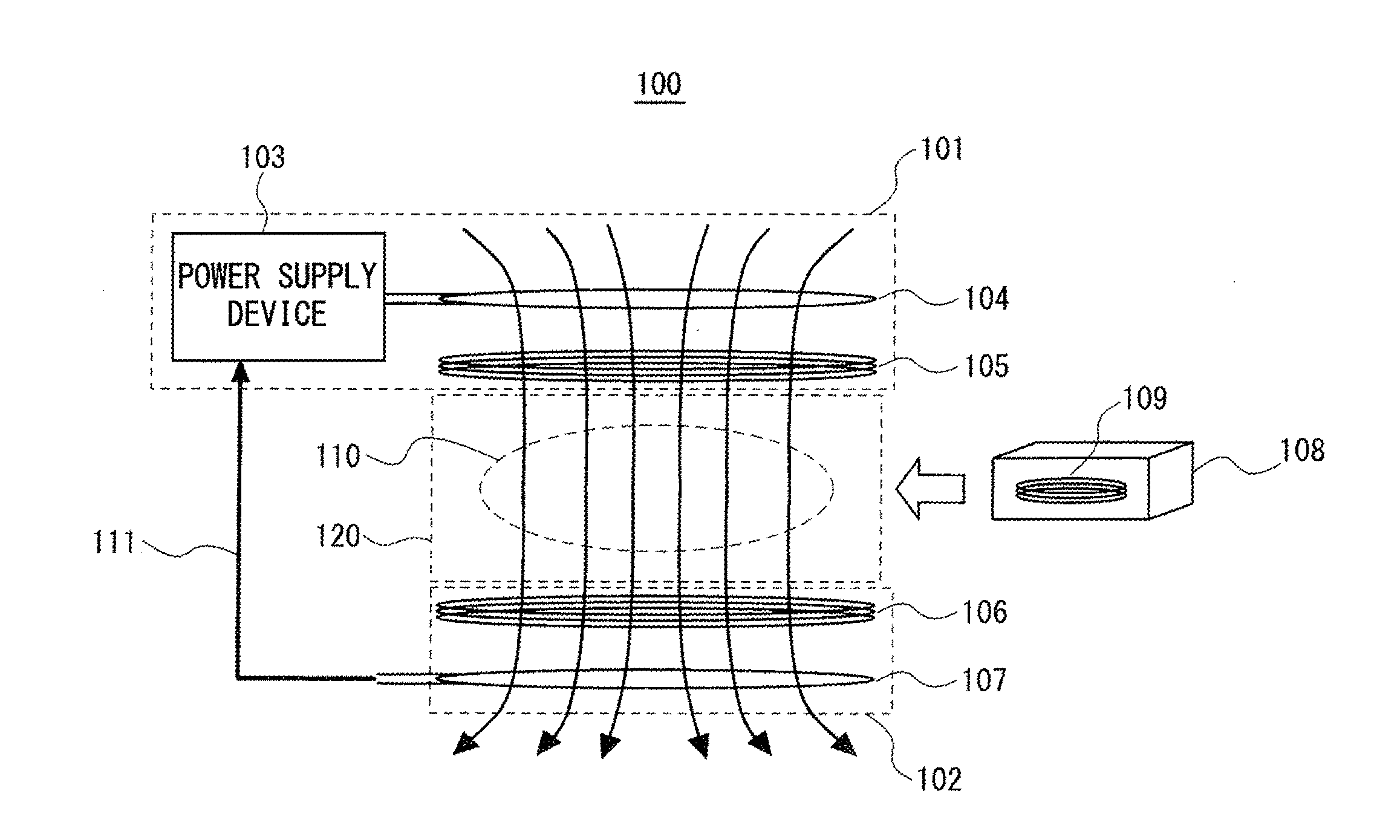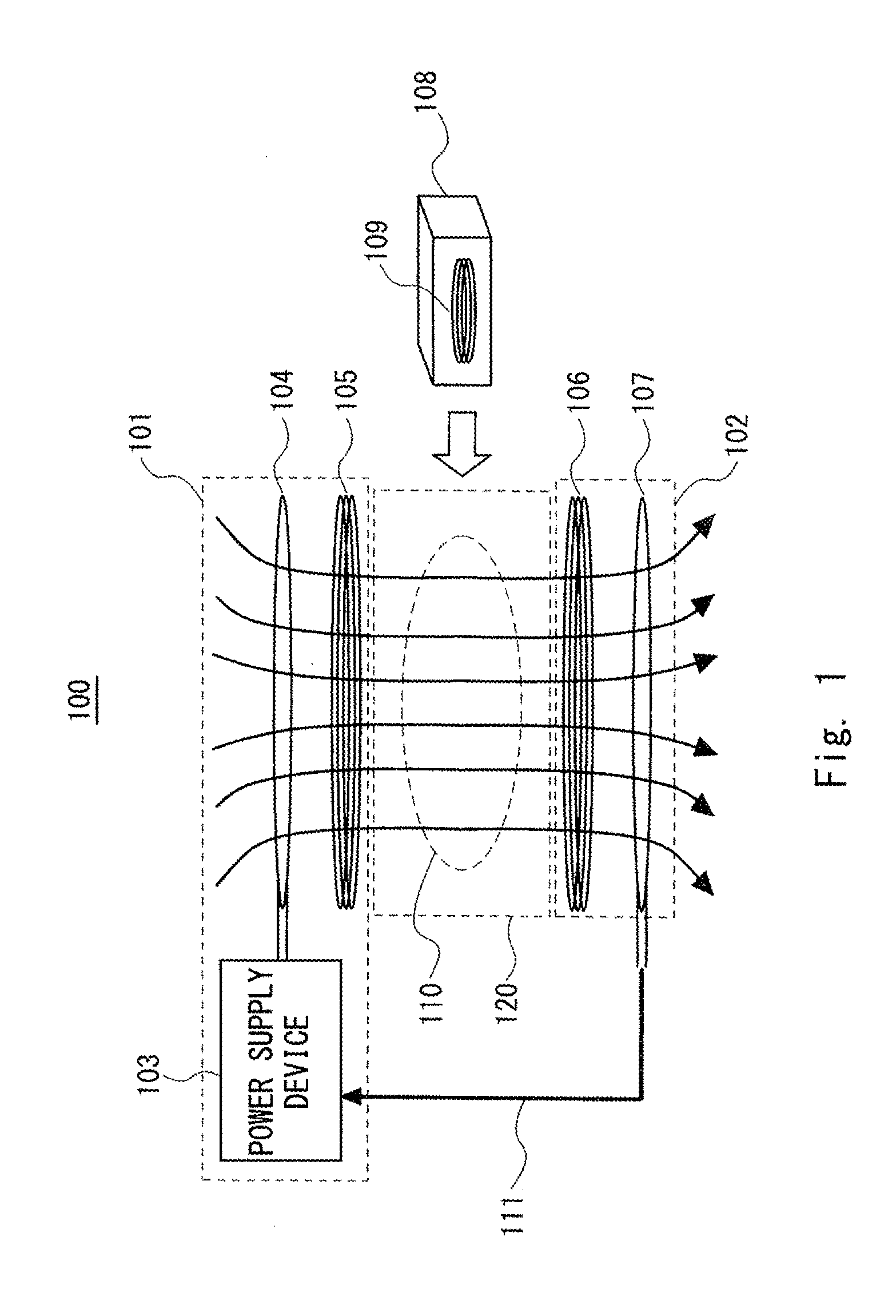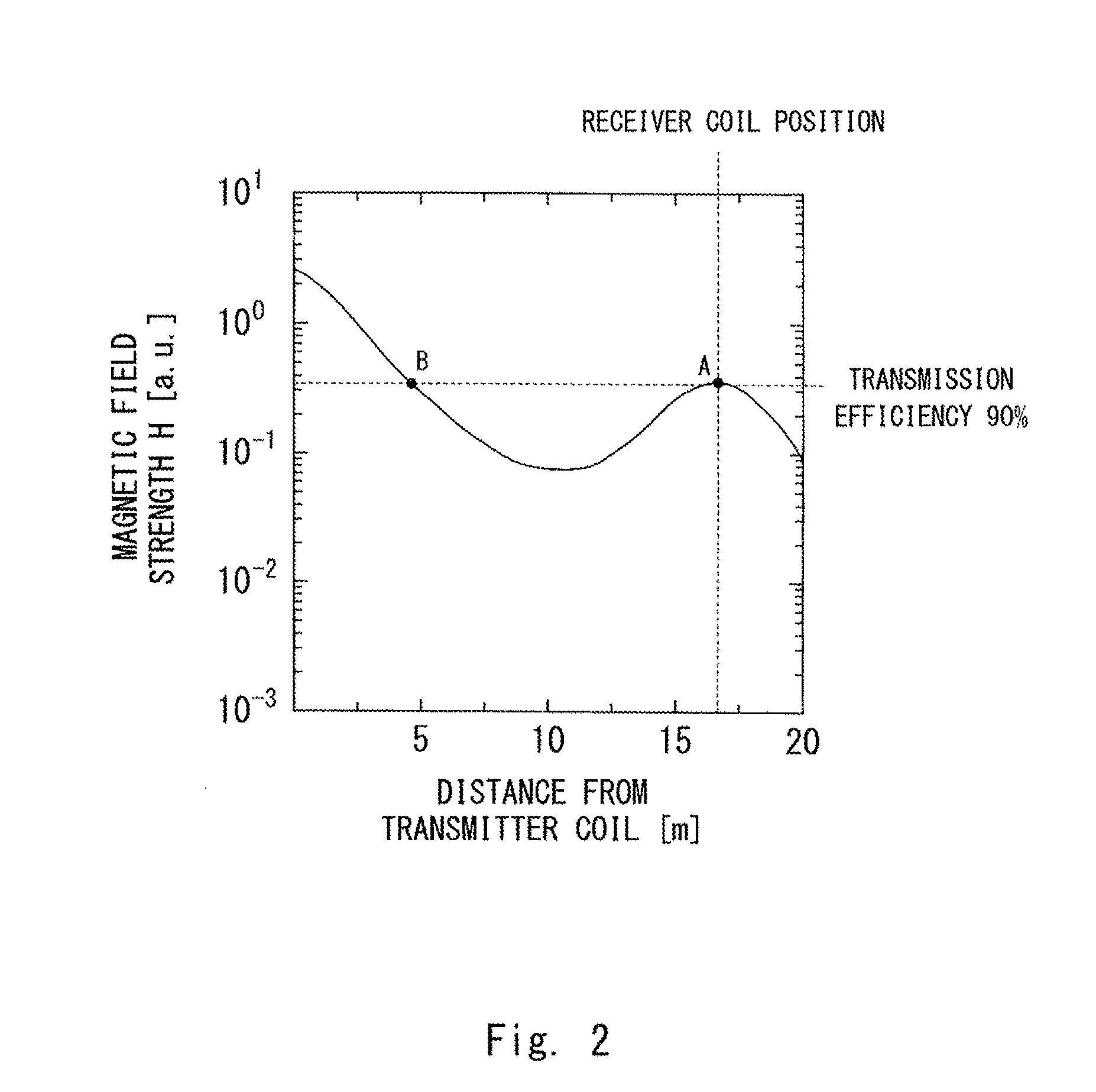Wireless power feeding system and wireless power feeding method
a power feeding system and wireless technology, applied in transportation and packaging, rail devices, battery/cell propulsion, etc., can solve the problems of coil diameter increase, drawback of above-described magnetic resonance system, etc., and achieve high-efficiency space power transmission and long distance
- Summary
- Abstract
- Description
- Claims
- Application Information
AI Technical Summary
Benefits of technology
Problems solved by technology
Method used
Image
Examples
first exemplary embodiment
[0033]First, a wireless power feeding system 100 according to a first exemplary embodiment of the invention is described hereinafter. FIG. 1 is a front view schematically showing the configuration of the wireless power feeding system 100 according to the first exemplary embodiment. As shown in FIG. 1, the wireless power feeding system 100 includes a power transmitter 101 and a power receiver 102. The power transmitter 101 is a device that wirelessly transmits power. The power receiver 102 is a device that receives power from the power transmitter 101. In the wireless power feeding system 100, an electromagnetic field is created in the space between the power transmitter 101 and the power receiver 102 by power transmission between the power transmitter 101 and the power receiver 102. In other words, power transmission is performed by means of magnetic resonance between the power transmitter 101 and the power receiver 102. Note that FIG. 1 schematically shows magnetic field lines 110 ...
example 1
[0052]A wireless power feeding system according to the example 1 of the present invention is described hereinafter. The example 1 relates to a wireless power feeding system 1001, which is an example in the case where the wireless power feeding system 100 is applied to a room in a building. FIG. 4 is a front view schematically showing the configuration example of the wireless power feeding system 1001 according to the example 1. As shown in FIG. 4, the power transmitter 101 is mounted on the backside of the ceiling of a room 201, and the power receiver 102 is mounted under the floor of the room 201. To simplify the drawing, the magnetic field lines 110 are shown by dotted lines in FIG. 4. In this example, the diameter of the coils of the power transmitter 101 and the power receiver 102 is 15 m, and the distance between the coils is 5 m. Further, the resonant frequency is 1 MHz. The transmitter primary coil 104 and the receiver primary coil 107 are circular single layer coils, and the...
second exemplary embodiment
[0054]Next, a wireless power feeding system 200 according to a second exemplary embodiment of the invention is described hereinafter. The wireless power feeding system 200 is a modified example of the wireless power feeding system 100. FIG. 5 is a front view schematically showing the configuration of the wireless power feeding system 200 according to the second exemplary embodiment. As shown in FIG. 5, the power transmitter 101 is placed to surround the space 120. The other configuration of the wireless power feeding system 200 is the same as that of the wireless power feeding system 100 and not redundantly described.
[0055]In the wireless power feeding system 200, an electromagnetic field in the space between the power transmitter 101 and the power receiver 102 can be enhanced just like in the wireless power feeding system 100, though the position of the power transmitter 101 is different. The power receiving body 108 inserted in the space 120 can thereby receive power with high eff...
PUM
| Property | Measurement | Unit |
|---|---|---|
| power | aaaaa | aaaaa |
| power | aaaaa | aaaaa |
| transmission distance | aaaaa | aaaaa |
Abstract
Description
Claims
Application Information
 Login to View More
Login to View More - R&D
- Intellectual Property
- Life Sciences
- Materials
- Tech Scout
- Unparalleled Data Quality
- Higher Quality Content
- 60% Fewer Hallucinations
Browse by: Latest US Patents, China's latest patents, Technical Efficacy Thesaurus, Application Domain, Technology Topic, Popular Technical Reports.
© 2025 PatSnap. All rights reserved.Legal|Privacy policy|Modern Slavery Act Transparency Statement|Sitemap|About US| Contact US: help@patsnap.com



